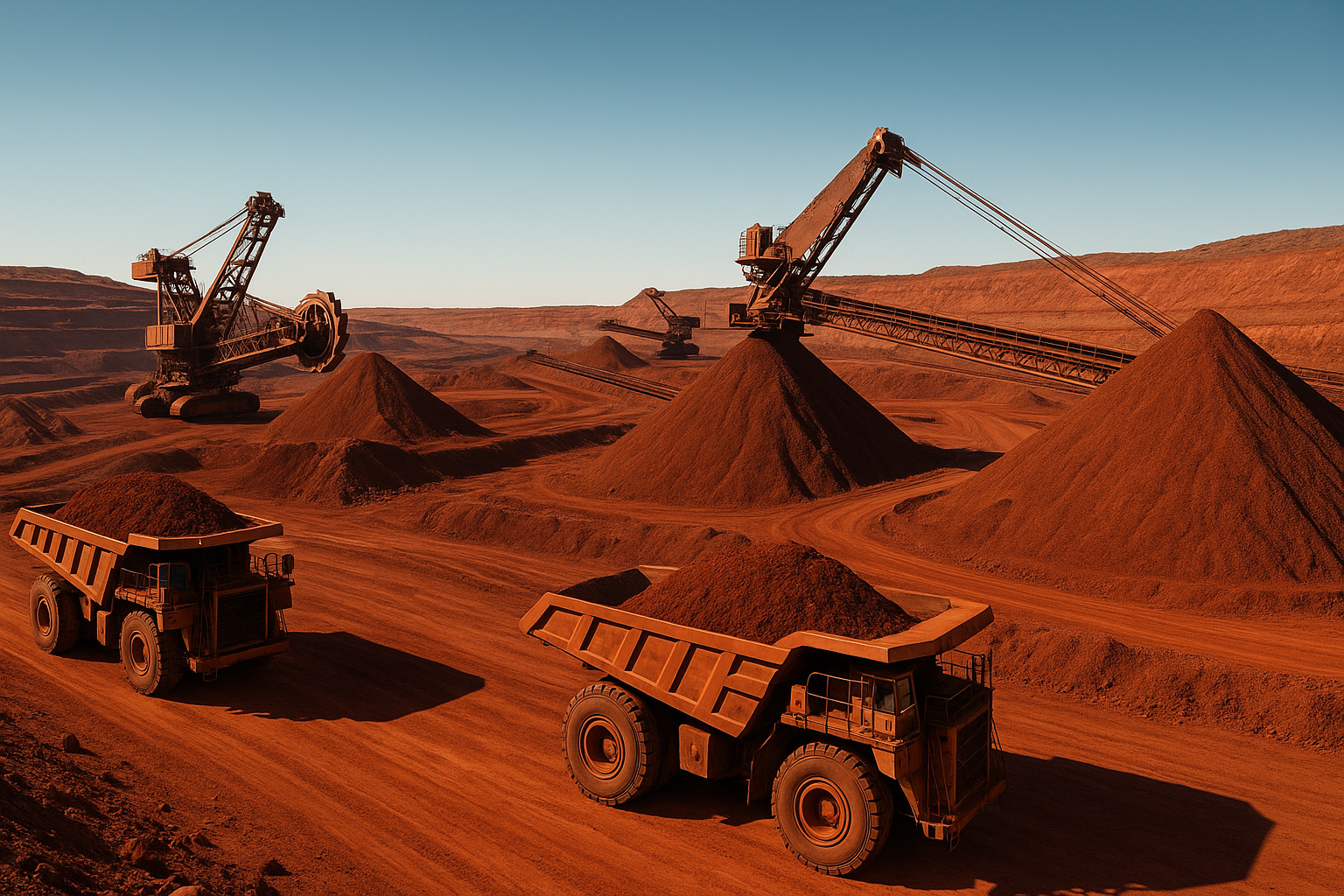Australia just hit the resource lottery—again. A massive $6 trillion iron ore discovery has mining executives popping champagne while economists frantically recalculate global supply forecasts. It's not just big money; it's economy-altering, market-disrupting, "we might need to rewrite some textbooks" kind of money.
The find comes at a peculiar moment in global markets. Just as resource scarcity narratives were gaining steam, Mother Nature (with some help from advanced geological surveying) tosses in what amounts to a second Australia's worth of iron ore... in Australia itself. Talk about doubling down.
I've covered commodity markets for years, and this discovery represents what insiders call a "structural reset"—though that clinical term hardly captures the magnitude. This is like finding out the gas tank you thought was running on empty actually has enough fuel to circle the globe. Twice.
Price Panic or Profit Paradise?
The immediate market reaction has been... complicated. Iron ore futures took a nosedive—no surprise there. When you suddenly announce enough new supply to satisfy global demand for decades, traders don't exactly rush to bid prices higher.
"We're looking at a fundamental recalibration," explained Dr. Sarah Henderson, chief commodities strategist at Morgan Stanley, when I spoke with her yesterday. "The short-term volatility masks what's really a long-term ceiling being placed on prices."
Rio Tinto and China Baowu's partnership to develop another massive mine now seems almost redundant. Almost. Because in the strange world of global commodities, announcements of abundance sometimes trigger races to produce faster, not slower.
Look, the Australia-China resource relationship remains one of those fascinating economic marriages that defies political gravity. These two countries disagree on practically everything except the mutual benefit of digging up Australian dirt and shipping it to Chinese factories. It's like that couple who can't stand each other's families but stay together because the sex is great. (Except replace "sex" with "hundreds of billions in trade revenue.")
America's Steel Surprise Party
Meanwhile, across the Pacific, American steel producers are quietly calculating their windfall. Lower input costs without lifting a finger? That's the corporate equivalent of finding money in every pair of pants you own.
Companies like Nucor and Cleveland-Cliffs—the backbone of American steel—stand to see margin improvements that could translate to billions in additional profits. Though whether any of those savings reach consumers is... well, let's just say I'm not holding my breath.
The implications ripple far beyond raw materials. Every industry that uses steel—from automakers to construction to appliance manufacturers—just got an unexpected cost reprieve. For Detroit automakers hemorrhaging cash on their electric vehicle transitions, this couldn't come at a better time.
"It's not going to solve all our problems," one Ford executive told me (on condition of anonymity because he wasn't authorized to discuss supplier economics). "But when you're burning billions on EV development, any input cost relief is like finding water in the desert."
The Global Ripple Effect
The fascinating thing about commodity markets? They connect seemingly unrelated corners of the global economy in ways that defy simple analysis.
A pension fund manager in Oslo, a construction worker in Chicago, a factory owner in Guangzhou, and a mining executive in Perth all suddenly have their economic fortunes nudged in different directions by rocks in the Australian outback. That's not hyperbole—that's how globally interconnected our economy has become.
Brazilian mining giant Vale now faces an existential challenge to its competitive position. Chinese property developers—already drowning in debt—might find slightly cheaper steel provides a tiny bit more breathing room. American infrastructure projects could stretch their budgets a bit further.
And Australian government officials? They're probably calculating tax revenues with the gleeful focus of kids counting Halloween candy.
What makes this story particularly ironic is its timing. Just as the world embraces "green" technologies that require... you guessed it... massive amounts of steel for everything from wind turbines to electric vehicle charging infrastructure.
Dirt Worth More Than Tech
There's something profoundly humbling about how a pile of dirt—albeit very specific, mineral-rich dirt—can shift global markets more dramatically than many technology innovations. We build sophisticated financial systems operating at light speed, and then the whole apparatus gets jolted because we found more rocks.
I've been covering resource markets since before the China-driven supercycle of the early 2000s, and one lesson stands out: commodities have a way of making fools of forecasters. The "peak resources" crowd periodically gains influence, only to be undermined by human ingenuity—whether through new discoveries or technological advances that make previously uneconomic resources suddenly viable.
This discovery represents both dynamics at work. New exploration techniques identified deposits that older methods missed, while advances in mining technology will make extraction economically feasible.
The $6 trillion figure, while eye-popping, requires context. It represents the total estimated value at current prices—prices that will almost certainly decline because of this very discovery. And extraction will take decades, not years.
But still. SIX. TRILLION. DOLLARS.
That's not just money. That's the kind of wealth that reshapes national fortunes and realigns global trade patterns. All from rocks that have been sitting there, untouched, for millions of years.
Sometimes the most important economic stories aren't about clever financial engineering or technological breakthroughs. Sometimes—quite literally—it all comes down to dirt.
